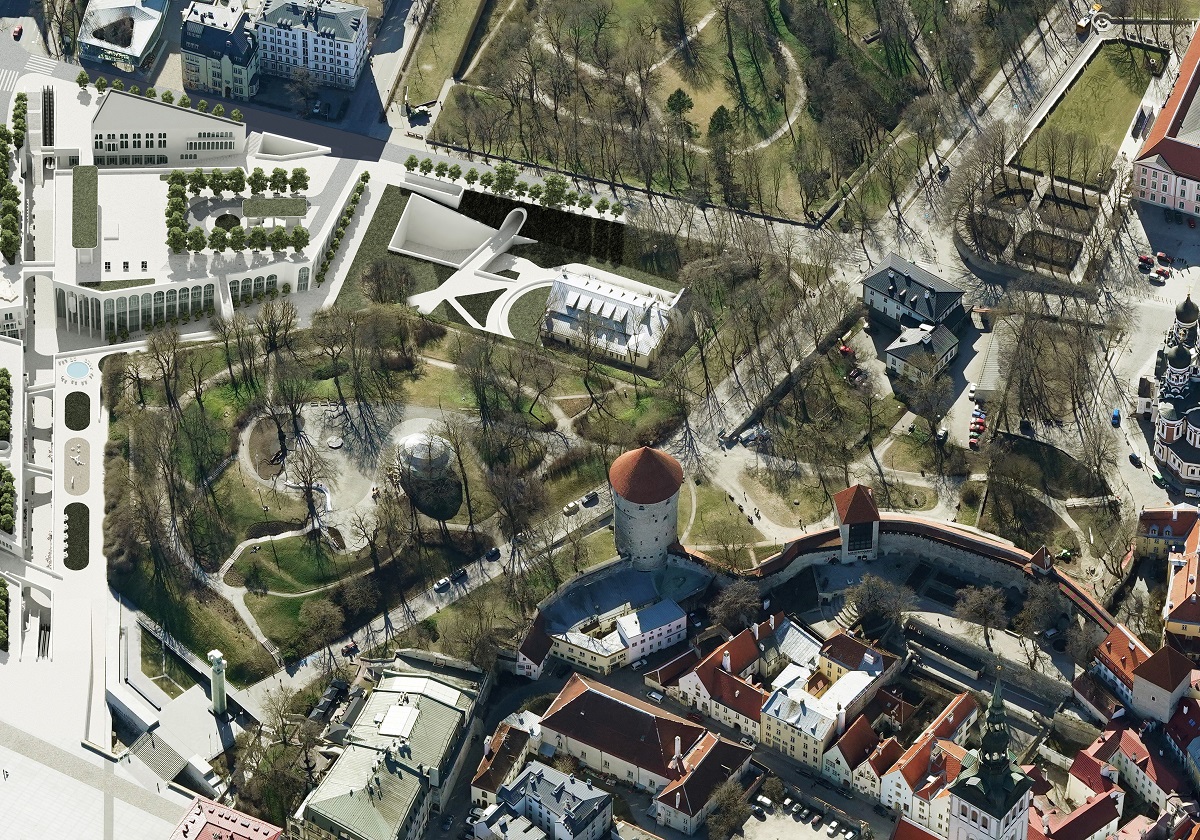The Estonian National Symphony Orchestra and the Estonian Philharmonic Chamber Choir presented the idea for the Heliorg Concert Hall

The Estonian National Symphony Orchestra and the Estonian Philharmonic Chamber Choir present the project ‘Heliorg Concert Hall’ to the competition of nationally important cultural objects. The concert hall, the conceptual design of which includes a concert hall with good acoustics that does not exist in Tallinn to date, would become both an international and a national landmark. The concert hall would become the home of the Estonian National Symphony Orchestra and the Estonian Philharmonic Chamber Choir, and the operating conditions would also improve for many other music groups.
‘Estonia needs a modern musical beehive that would be buzzing from morning to night and where both the Estonian National Symphony Orchestra and the Estonian Philharmonic Chamber Choir would find a worthy home. Tallinn deserves a world-class concert hall and there is an ideal place for that at the foot of Toompea!’ (Olari Elts)
‘I look forward to having a world-class concert hall in Estonia, where it would be possible to do something great.’ (Neeme Järvi)
According to Tõnu Kaljuste, the new concert hall will create modern conditions for musicians to perform and audiences to enjoy masterpieces written for the symphony orchestra, as well as opportunities for contemporary musical theatre. However, Kaljuste considers it most important that the Estonian National Symphony Orchestra and the Estonian Philharmonic Chamber Choir get a real, permanent home.
Functions of the Heliorg Concert Hall
The Estonian National Symphony Orchestra and the Estonian Philharmonic Chamber Choir are experienced groups who introduce Estonian music culture all over the world, but have not yet managed to find a home. The Heliorg Concert Hall would be home to two Estonian ensembles, and the new concert venue would benefit the entire Estonian music scene – the Concert Hall would also become a high-quality concert venue for many other ensembles, festivals, and guest orchestras. The hall will also allow artists to perform chamber operas, which would bring the whole music genre out of the shadows – there is currently no proper place for chamber operas in Estonia. In the new environment, the visual arts would certainly find application in symbiosis with music in performances/concerts related to multimedia and the combination of art forms. Conference organisers and event marketers would have a presentable venue to host nationally important events.
There are two halls planned for the concert hall: a large hall (1,500–1,700 seats) and a chamber hall, which can also be used as an open-air stage during the summer with the help of a movable wall.
In addition to the two halls, the building has a number of large and small rooms that are suitable for receptions, smaller conferences, and other events. These could be rented out to cover the administrative costs of the concert hall.
Heliorg as an national and international landmark
The next nationally important cultural object must be constantly open to guests; we do not need another building that only opens its doors in the evenings. A good example is the South Bank Centre in London, where the townspeople and tourists also have activities outside of concerts – there are cafés, restaurants, public areas, and the whole centre functions as a public space. The location and the function of a landmark are undeniably important for tourists as well. It is an ideal place to dine in a restaurant offering Estonian food, be acquainted with the exhibitions of Estonian musical heritage, and buy some cultural souvenirs from the souvenir shop. Cultural tourism is also undeniably important and a growing part of the tourism industry.
Solutions for the future
This has already become the rule for many new sites, but it must be pointed out that the next concert hall could also reflect our e-success story. We could use various smart solutions, which are used surprisingly rarely in new concert halls. One good example here is the Miami New World Concert Hall, where smart solutions have created a new quality environment for creation.
Location of the Heliorg Concert Hall
Over the years, a wide variety of plots have been considered as the location of the new concert hall, each with its own pros and cons. At the moment, the most preferred location is Harjuorg, which connects Toompea with Freedom Square. Architect Villem Tomiste has thoroughly worked on a plan on how to find a suitable solution, taking into account all the limitations of heritage protection and the park zone. Taking into account all the factors, there is an understanding that the concert hall, which functions as an open space, fits very well in the given location.
The area has received a lot of attention because it is located in the bastion zone surrounding the Old Town, which is subject to a number of conditions in terms of both cultural heritage and heritage protection, but also because there have been attempts to make this area benefit the cityscape, but these have not been very successful. MTÜ Harjuoru 2030 and architect Villem Tomiste have mapped these limitations and possibilities and they have been taken into account in the extended Heliorg project. It can be said that these limitations play a truly unique role in the development of the project. A public discussion has been initiated on the role of the Old Town–New Town connection area, within the framework of which the City Forum organised by the Estonian Centre of Architecture and MTÜ Harjuoru 2030 will take place. An international architectural competition is planned to find the ideal solution for the Heliorg Concert Hall.
Gallery: https://www.dropbox.com/sh/udr4fvirq9o42sg/AADUqzP-DhSyrRolXYNtdhefa?dl=0
Further information:
Kristjan Hallik
kristjan.hallik@erso.ee
+37256568754
Villem Tomiste
villem@stuudiotallinn.ee
+3725517040
Olari Elts
olari@nyyd.ee
+372 502 7126
Esper Linnamägi
esper@epcc.ee
+372 565 5515

 EST
EST